You have probably seen lemon balm growing whether you knew it or not. In the mint family, lemon balm (Melissa officinalis) is a perennial herb that spreads rapidly and has become a fairly common “wild” plant. When I’m out foraging and I see what looks like a plant in the mint family it is more often that not lemon balm. Most mints look similar and they all have square stems, which makes them pretty easy to identify, and if it smells like lemons then it’s most likely lemon balm. It’s such an awesome plant that you definitely will want to start growing and foraging for lemon balm as soon as you can. Like today!
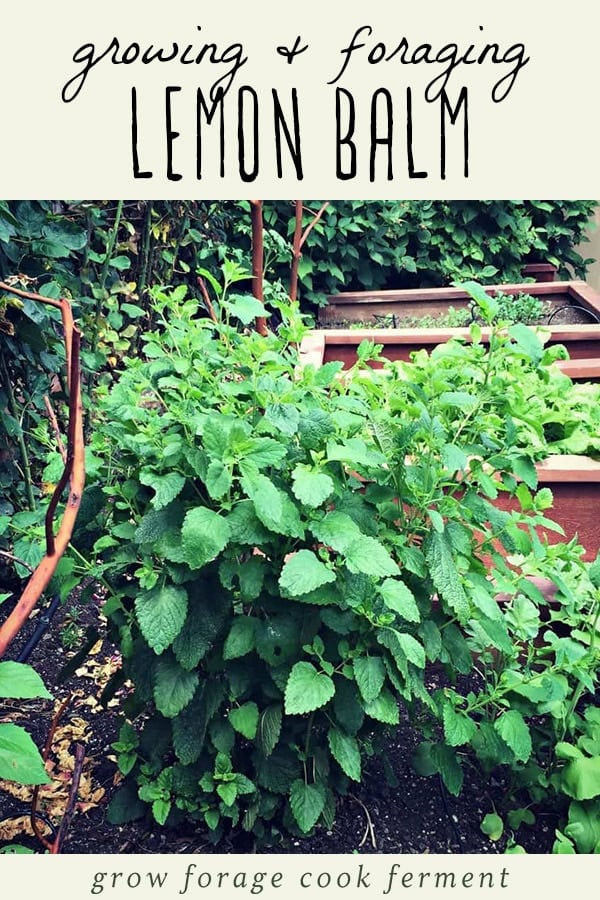
Want to save this post for later?
Wildcrafting Weeds
If you want to learn more about the edible and medicinal weeds that surround us and how to use them, check out my eBook: Wildcrafting Weeds: 20 Easy to Forage Edible and Medicinal Plants (that might be growing in your backyard)!
I also have a wonderful iced green tea with lemon balm recipe to share with you! Such a nice treat on a hot summer afternoon. But first, let me tell you about this awesome plant.
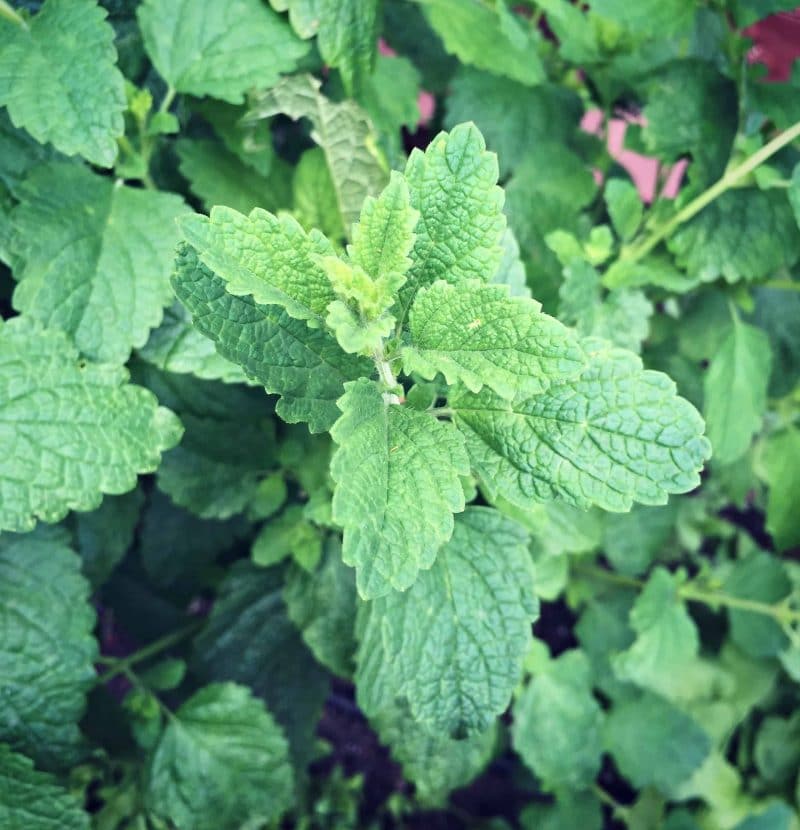
Growing and Foraging Lemon Balm
Lemon balm is a great permaculture plant, for starters. It repels flies and ants, attracts bees when flowering, and is a companion plant for brassicas. It’s definitely a plant that you should have in your forest garden.
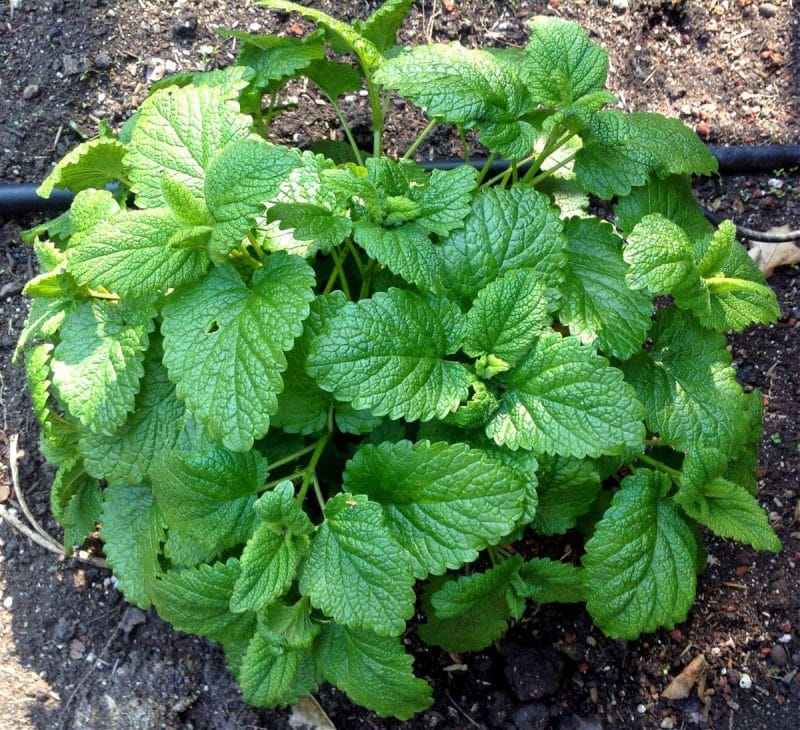
A few things to remember is that it can grow fairly large and it spreads. Neither of these things are problematic to me because the benefits of lemon balm are so great. But, to show you an example, the above picture is one of our lemon balm plants that we thought was huge a couple of months ago. Below you will see how big it is now!
Learn more about growing Lemon Balm here!
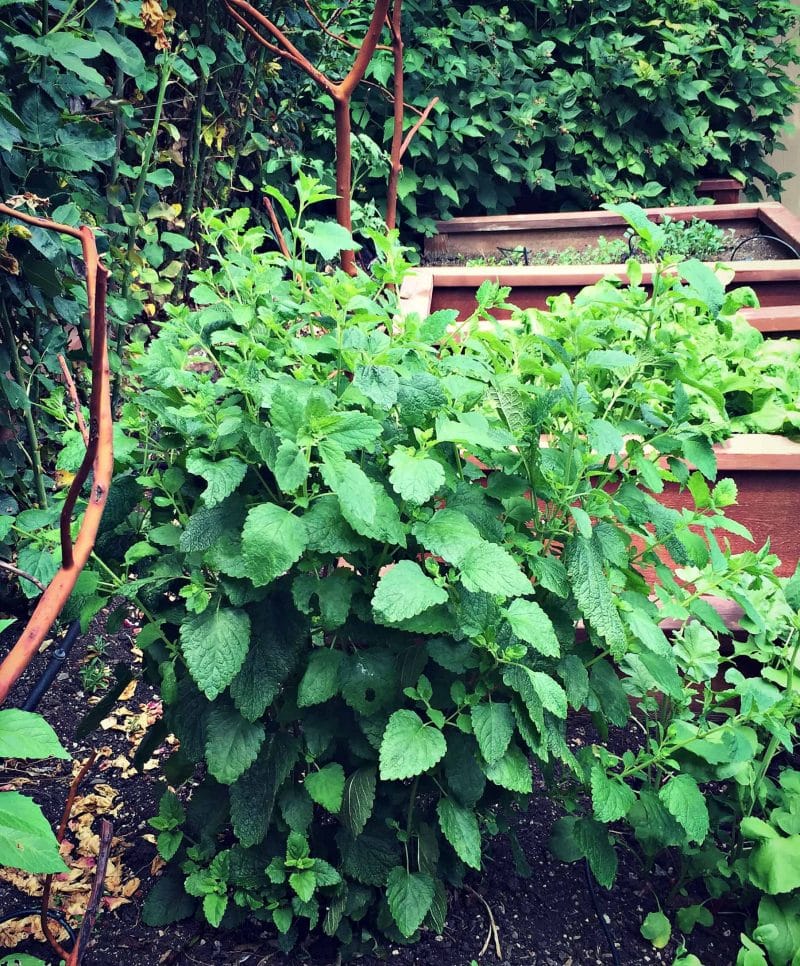
Uses of Lemon Balm
No big thing once you understand how cool lemon balm is. Besides its use in the garden, it’s also one of the best medicinals around. The leaves are antibacterial, antiviral, sedative and tonic. They are also a powerful antioxidant, and might even be helpful in preventing cancer. You can even rub them on your skin as an insect repellent.
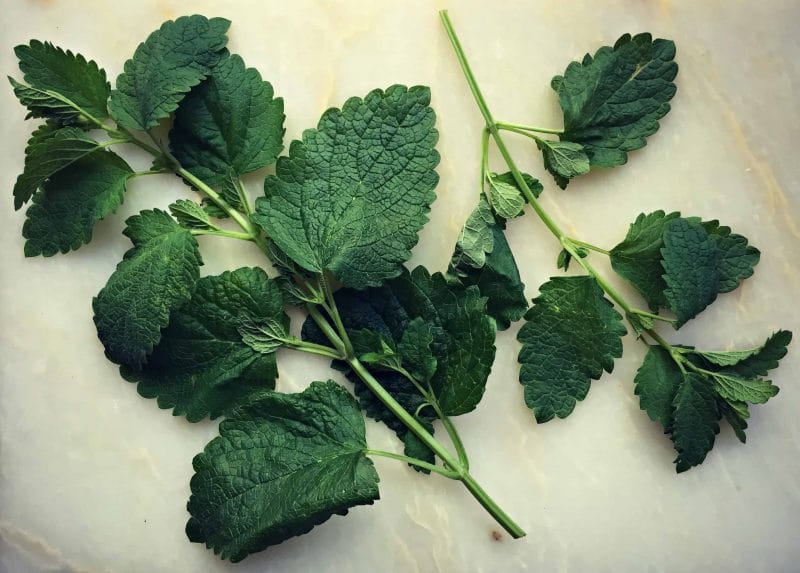
Lemon balm also has a considerable beneficial effect on the digestive system, as plants in the mint family generally do. Making a tea with the leaves is a common practice. If you have a lot of lemon balm growing you can also dry them in bundles by hanging them upside down. That way you can save some for winter.
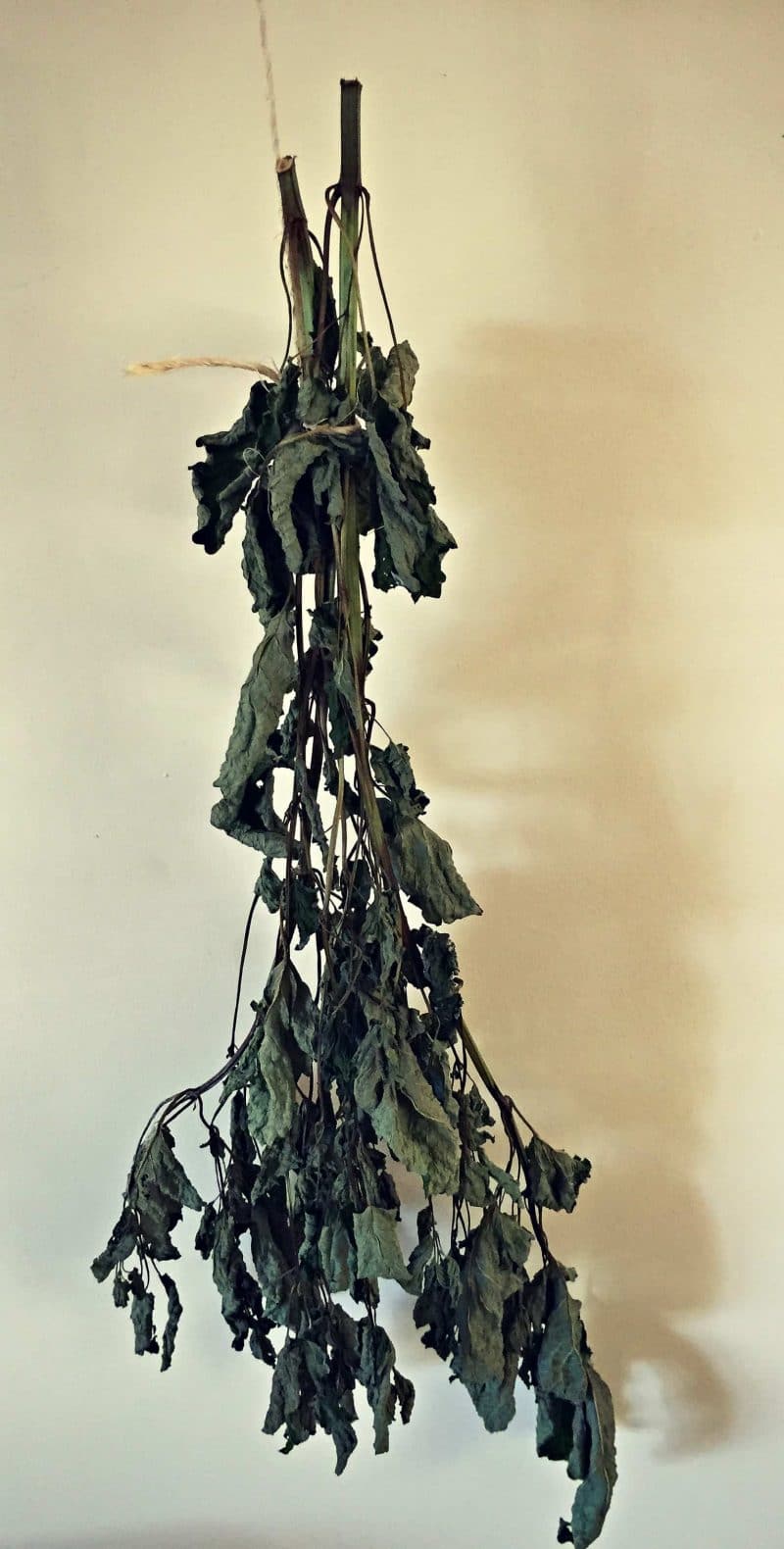
Make sure the leaves are completely dry before sealing them in a jar. The leaves also serve as a delightful fragrance, which is why I included it in my herbal salve recipe and herbal No Bug Balm.
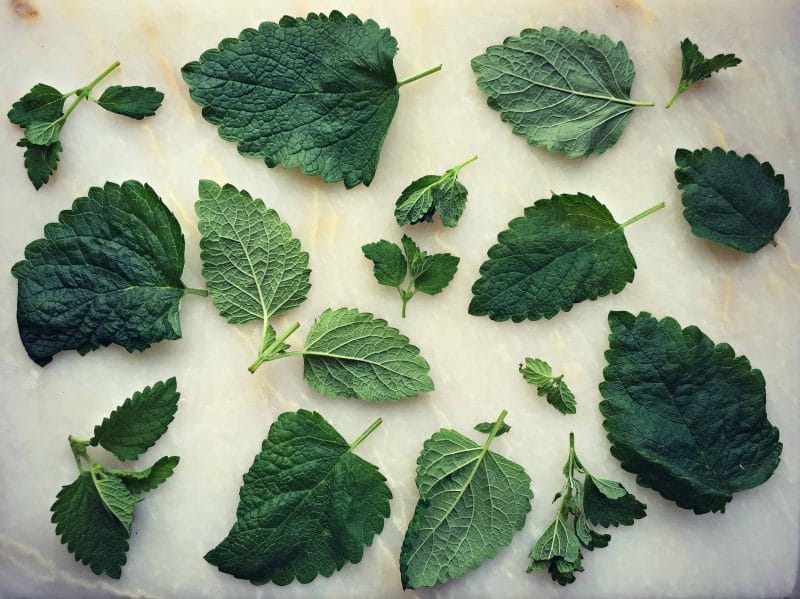
Lemon Balm Tea Recipe
But, honestly, my favorite way to use lemon balm is in a tea. In the winter and early spring the dried leaves make a lovely lemony and minty addition to hot tea, but this time of year I like to use the fresh leaves in a fragrant iced tea.
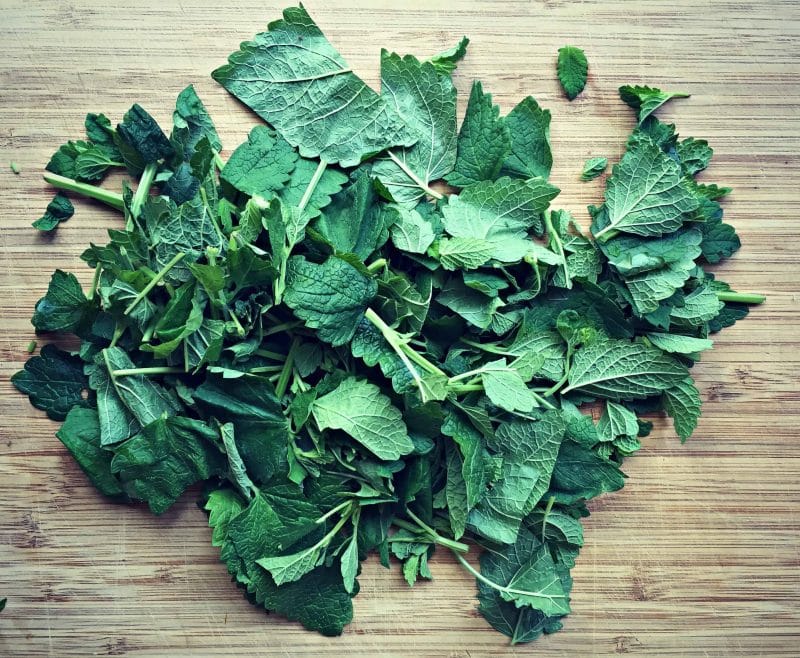
Roughly chop up your leaves and give them a quick rinse to get all the bugs off. If you have harvested from the wild, please make sure it was from an area that was not sprayed with pesticides. I like to make at least a ½ gallon batch at a time when I do this, as it tends to go fast!
I also like to add some green tea to the mix, because I like a mild kick of caffeine in the early afternoon when I’m likely to drink this, but you can omit that if you want. Bring about 6 cups of water to a boil, then turn off the heat and add the lemon balm leaves and a tea ball (or a couple of tea bags) of green tea.
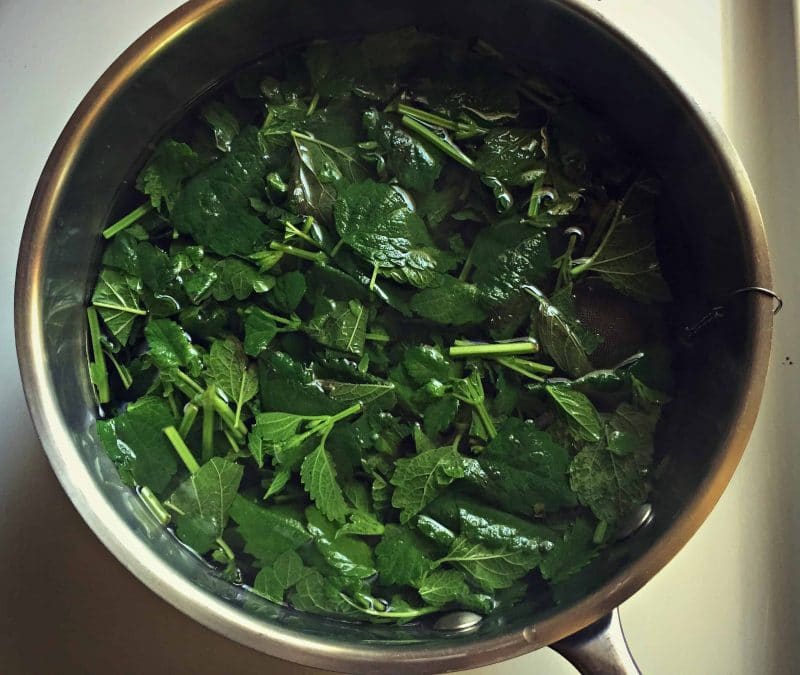
Let the green tea steep for 5-6 minutes, then remove. Continue to let the lemon balm steep for up to 30 minutes. Add a drizzle or two of honey if desired. Strain the tea into a ½ gallon glass jar and top off with ice.
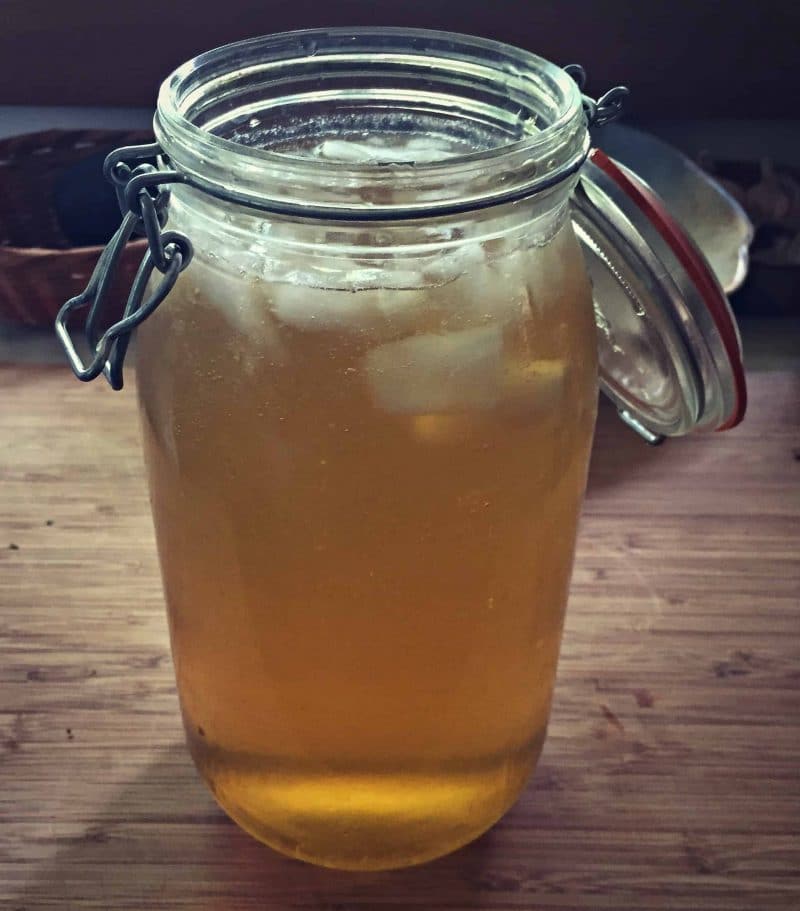
Store in the fridge until ready to serve. This goes down real easy on a hot day!
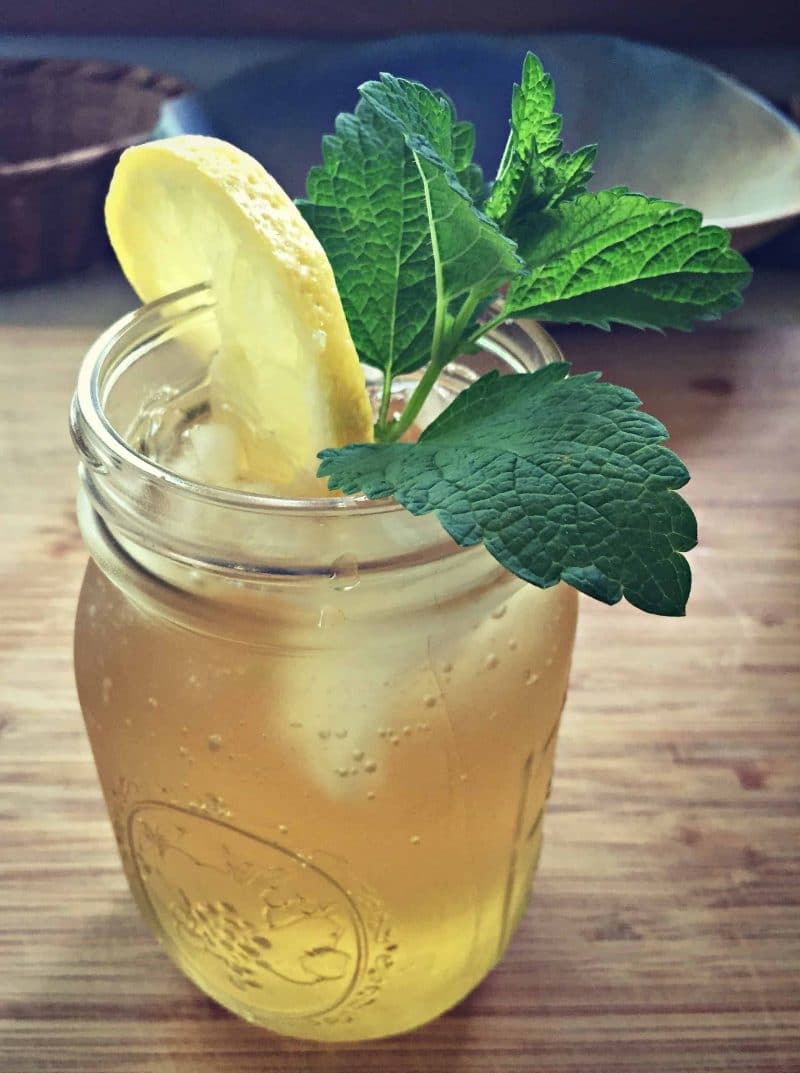
Drink your tea and wash your cares away because you are imbibing in one of the most relaxing and healthful herbs on the planet. And it even tastes good! That doesn’t happen very often.
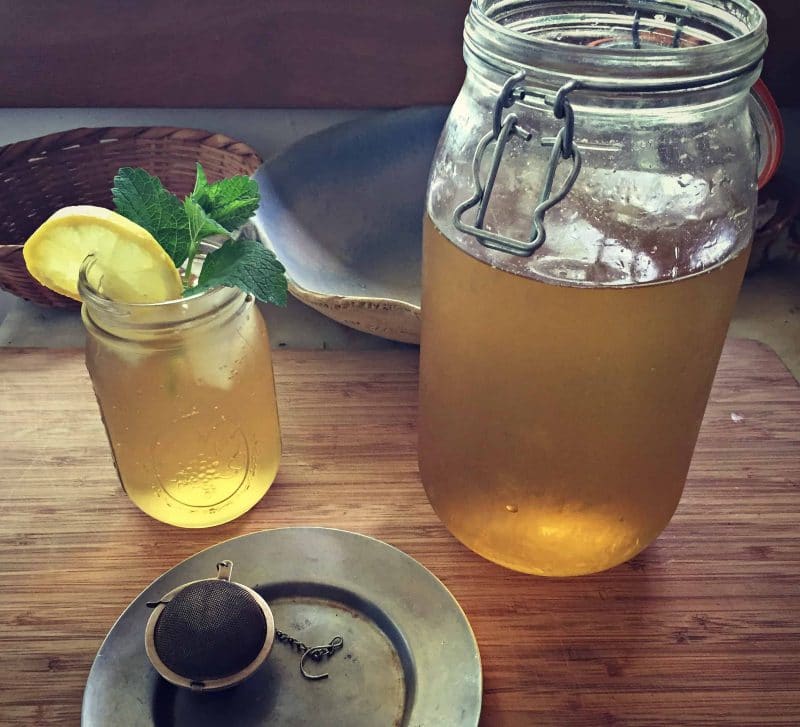
This is something that I will be making on a regular basis from now on! It was even tastier than expected. Forget about soda or even those so called “electrolyte drinks” that are full of sugar. This is what you should be drinking!
If you can’t find any lemon balm, or if it’s the wrong season, you can always order dried lemon balm from Mountain Rose Herbs (my favorite place to buy high quality, organic herbs).
Here are a few more articles on lemon balm for further reading:
- Lemon Love: Grow and Enjoy Lemon Balm in Your Garden and Culinary Herbs as Home Remedies: Lemon Balm from Untrained Housewife
- 12 Things to Do With Lemon Balm from The Nerdy Farm Wife
- Headache Tea Blend from Pixie’s Pocket
- How to Use Lemon Balm as a Natural Bee Sting Remedy and Lemon Balm Lavender Scones from The Herbal Academy
Or check out our complete listing of lemon balm recipes for food, drink, remedies, and more!
As you can see, lemon balm has many uses, from garden beneficial to medicinal tonic to culinary herb. Definitely not a bad plant to have around. Go search the edges of your yard, you may even have some growing! Wouldn’t that be an exciting treat?
Lemon Balm Herbal Iced Tea
Ingredients
- lemon balm leaves
- 1 teaball green tea, or a couple tea bags
- 6 cups water
Instructions
- Roughly chop up your leaves and give them a quick rinse to get all the bugs off.
- Bring about 6 cups of water to a boil, then turn off the heat and add the lemon balm leaves and a tea ball (or a couple of tea bags) of green tea.
- Let the green tea steep for 5-6 minutes, then remove.
- Continue to let the lemon balm steep for up to 30 minutes.
- Add a drizzle or two of honey if desired.
- Strain the tea into a ½ gallon glass jar and top off with ice.
Notes
- Store lemon balm herbal tea in the fridge until ready to serve.
Nutrition

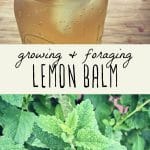
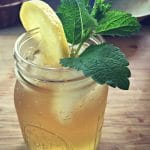

My plantin app recognized this plant as lemon balm but it tastes quite bitter and more like mint.
???
Lemon balm is a type of mint, so your app may be wrong.
What I have growing looks just like lemon balm, but is obviously another member of the mint family. Do you have similar recipes for mint? Or just do the same drying and steeping as lemon balm?? Any other uses for mint?
You can find all my mint recipes here: https://www.growforagecookferment.com/mint-recipes/
Thank you Colleen!!! Is it ok to drink violet tea within a few hours of lemon balm tea?
Yes, that should be totally fine!
Will lemon balm work in sun tea? Or does it need the boiled water?
It should still work!
I recently purchased a relatively healthy lemon balm plant in a 6 container- I live an apartment but would love to keep this alive- can you share with me how to grow inside a container and what’s needed for the plant to thrive. My leaves are starting to turn brown
There are some great tips for growing lemon balm indoors here: Growing Lemon Balm Indoors
In what kinds of habitats can lemon balm be found growing wild?
Lemon balm grows in many different regions and habitats just like wild mint! It tends to prefer cooler places with more moisture such as on stream banks, but I’ve found it all kinds of places.
when you say put the product in a jar, you don’t specify what size jar in any of your recipes, can you please let me know. thanks, otherwise it alls sound awesome. i planted a lemon balm plant this year and it seemed so small but now its huge. i have another one i planted a couple years ago and it doesn’t really take over, but it gets bigger every year. you said they keep ants away, i’m wondering if planted next to a peony bush if that would help keep ants off of that.
Hi Dori, when I don’t specify the jar size, then you can really use any size jar you want. It all depends on how much plant material you have and how much you want to make!
Your peonys won’t bloom without the ants, the ants eat the wax off the bud so it can open.
How much Lemon Balm should I use for the recipe for cold ice tea with fresh leaves ?
I have the same question …. how many leaves to the 6 cups of water?
A few good handfuls is perfect! More or less to taste.
I only remember planting lemon balm once (years ago) and it has spread all over the place! I have to confess I’ve pulled it out many times as it is trying to invade my perennial garden. So with that word of caution, I am getting excited now to start loving and using it. We have an acre of land, so from now on I will just transplant it to a wild corner of the yard and let it go.
can someone use this if they are allergic to citrus?
Yes. This is not in the citrus family. It just happens to taste like lemon.
Do you wash your leaves when you bring them in for drying or after they are dried up.
I generally try to pick leaves that are relatively clean to begin with. If they are in need of washing, I would wash first when they are fresh, then blot them well to dry with a paper towel or rag.
I love your information on wild flowers. We are familiar with some of them. You are doing a great research. Congratulations.
This sounds scrumptious! I love lemon balm! I usually make tincture from it; and grow it around the patio for bug repelling….now I look forward to making tea! Thank you!
How much lemon balm do you use, per 6 cups of water? I’ve read through 3 times now and I just don’t see the amount listed, only roughly chop the leaves, add them to your boiled water, and steep for 30 minutes. I am new to using lemon balm, and this is my first year growing it, so I want to be sure to have the right proportions, to avoid waste. Thanks :)
Honestly, it’s up to you based on how strong you want it. I didn’t measure (I’m known for that, haha!) but it was probably about a cup or a little more of chopped leaves. Do what you think and I’m sure it will turn out fine!
Will look for it in the garden shops.
does it ever flower? I am wondering if I have seen it down our road? Very interesting
It flowers along the stem under each leaf set. The flowers are small. For my region in Eastern Tennessee, flowering is in June.